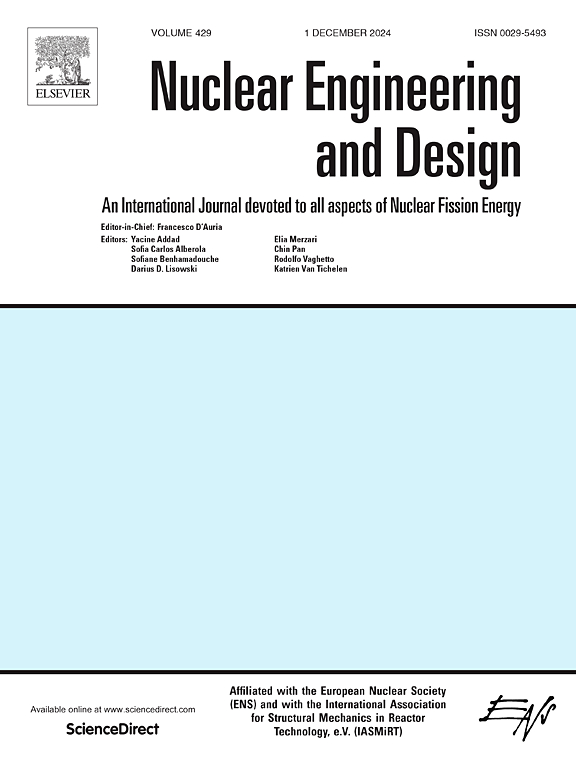Perovskites as potential candidates for storage and conversion of spent nuclear fuel energy
IF 1.9
3区 工程技术
Q1 NUCLEAR SCIENCE & TECHNOLOGY
引用次数: 0
Abstract
Energy harvesting is a versatile approach that holds promise for generating clean energy and enhancing the sustainability of infrastructure. Given the challenges associated with nuclear waste, such as radiation levels and long-term storage requirements, developing suitable materials for energy harvesting is crucial. These materials must be capable of withstanding the harsh conditions present in nuclear waste storage facilities while efficiently capturing and converting energy. The objective of this work was to study lead halide perovskites (MAPbCl3 and MAPbI3.) in terms of their application for conversion and storage of energy released from spent nuclear fuel. Firstly, in this work, the detailed analysis of MAPbCl3 and MAPbI3 irradiated by spent nuclear fuel assembly IRT–4 M (consisting of high energy gamma photons and suppressed neutron fluxes) was done. The spent nuclear fuel irradiation practically did not change the materials structures, composition, chemical bonds, phase transitions (temperatures, energies). On the other side, irradiation caused the defects in the electron shells. Our results confirm the possibility of using the investigated perovskites for the conversion and storage of energy from spent nuclear fuel: 1. to convert the energy of spent nuclear fuel assembly into release of the electrical charge (photogenerated electron-hole pairs) and 2. to store the spent fuel energy into perovskite high temperature crystal phase. When the radiation increases the temperature up to high temperature first order phase transition the energy is consumed/stored into the high temperature material phase. As wide range of perovskite materials have very diverse first order phase transition temperatures it is possible to match the specific spent nuclear fuel radiation dose with the proper perovskite phase transition temperature. Finally, the photogenerated charges should efficiently extracted from the material and the stored energy can be released and subsequently reused by lowering the temperature (typically after removing the perovskite from the spent nuclear fuel cask) until the material returns to the low-temperature phase.
求助全文
约1分钟内获得全文
求助全文
来源期刊

Nuclear Engineering and Design
工程技术-核科学技术
CiteScore
3.40
自引率
11.80%
发文量
377
审稿时长
5 months
期刊介绍:
Nuclear Engineering and Design covers the wide range of disciplines involved in the engineering, design, safety and construction of nuclear fission reactors. The Editors welcome papers both on applied and innovative aspects and developments in nuclear science and technology.
Fundamentals of Reactor Design include:
• Thermal-Hydraulics and Core Physics
• Safety Analysis, Risk Assessment (PSA)
• Structural and Mechanical Engineering
• Materials Science
• Fuel Behavior and Design
• Structural Plant Design
• Engineering of Reactor Components
• Experiments
Aspects beyond fundamentals of Reactor Design covered:
• Accident Mitigation Measures
• Reactor Control Systems
• Licensing Issues
• Safeguard Engineering
• Economy of Plants
• Reprocessing / Waste Disposal
• Applications of Nuclear Energy
• Maintenance
• Decommissioning
Papers on new reactor ideas and developments (Generation IV reactors) such as inherently safe modular HTRs, High Performance LWRs/HWRs and LMFBs/GFR will be considered; Actinide Burners, Accelerator Driven Systems, Energy Amplifiers and other special designs of power and research reactors and their applications are also encouraged.
 求助内容:
求助内容: 应助结果提醒方式:
应助结果提醒方式:


